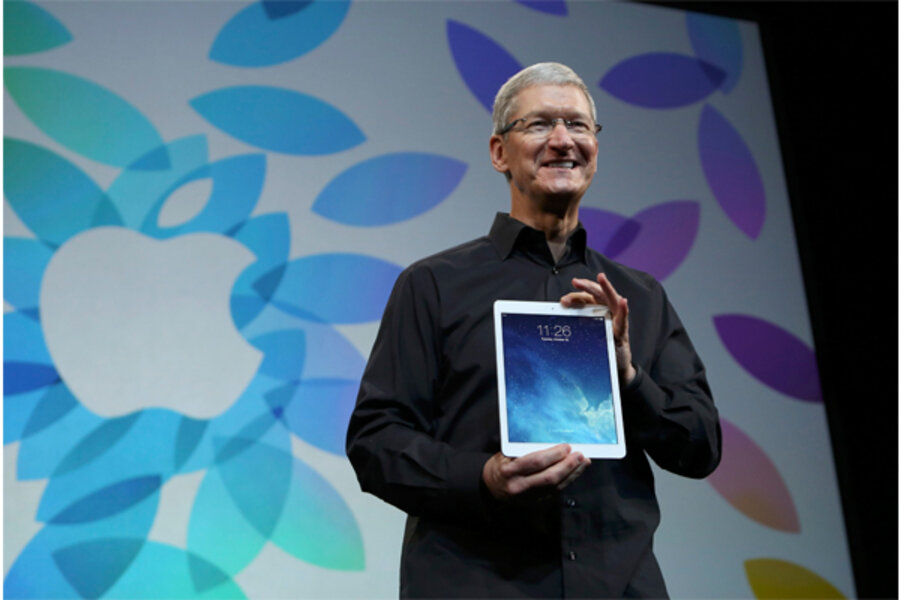Is the iPad Air, iPad Mini Retina, or iPad 2 right for you?
Loading...
The iPad Air and iPad Mini Retina stand as the fastest, clearest, and lightest tablets that Apple has ever offered. But with two great options, deciding between the two is no easy feat. Plus, the iPad 2 and original iPad Mini will still be available at a discounted price.
How to choose? The key is knowing what combination of portability, price, screen size, screen clarity, and processing speed makes the perfect iPad for you.
First up, the iPad Air versus the iPad Mini Retina. Hardware-wise, the two devices have nearly the same top-of-the-line features. Both offer super-quick A7 processors, a clear "retina" HD display, 5-megapixel rear cameras, improved front-facing cameras, 10 hours of battery life, and even the same space gray and silver color options. Both offer Wi-Fi and LTE models, as well as storage options that range from 16GB to 128GB. Plus, with either device, you’ll get fast hardware and sharp screen resolution, good for running iWorks and iLife apps that are now free for download from the iTunes store.
Do those hardware options look good to you? Then the debate comes down to screen size and weight. The iPad Air’s heft is true to its name: weighing in at only one pound, it seems impossibly light in your hand considering its processing power. The 9.7-inch screen (about the size of a magazine) is on the larger end of the tablet market. The iPad Mini Retina on the other hand, weighs 0.73 pounds and has a 7.9-inch screen (about the size of a thin paperback novel). Two inches in screen size can make a big difference, depending on how much room you'll allow your device to take up in your bag.
Price can also tip the scales. The iPad Mini Retina starts at $399 for a Wi-Fi-only model, whereas the iPad Air starts at $499 for the same. Do you save $100 and load up on accessories? Or do you opt for the larger screen for easier readability and a more laptop-like feel?
For productivity, CNET reviewer Scott Stein says your choice may depend on your work style.
"If you're a hard-core write-on-an-iPad person, the Air's physically larger size and virtual keyboard might make more sense,” he writes. “But you can do everything else fine on a Mini. It's just more compact.”
One thing that doesn't work as well on the Mini however, he writes, is the option of a physical keyboard cover. Where the keyboard on the Mini ends up cramped due to its smaller size, the keyboard cover on the Air feels far more natural.
“Older, 'large' iPads have excellent keyboard accessories, wide and normally spaced with a very comfortable feel,” he adds.
Aside from hardware and capability, patience may also be a factor. The iPad Air is available in stores Nov. 1, while the iPad Mini Retina release date has yet to be announced, though Apple estimates late November. Suppliers have also hinted at a backup of retina screens that may limit availability.
Aside from the two newest models, Apple will also keep the original iPad Mini in stores as well as the iPad 2. Both are still up-to-date models, as the iPad Mini was debuted in 2012 and the iPad 2 in 2011, but can offer a bit of a price break if you’re willing to sacrifice the latest tech. Both models are bulkier, slower, and more pixilated than their new model counterparts, but also cost $100 less as a base price. If price is a major factor, or you use the tablet for basic functions, this is the way to go.
“If you found one on sale or used for a very good price, I would not hesitate to pick one up,” writes iPhoneHacks.com about the iPad 2. “It is a great tablet for kids or for media consumption.”
From here, it comes down to choosing your perfect combination of factors. Is portability more important than price? Does a clear screen beat out screen size? Does the threat of limited availability mean you’ll pay a bit more to have a device right now?
Though you may have a bit of soul searching to do, with four solid iPads currently for sale there is likely an option for anyone.








